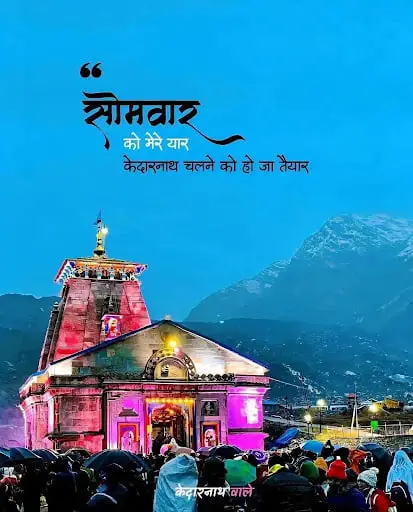Panch Kedar relates to Lord Shiva’s appearance as a bull in five distinct temples located in the Garhwal Himalayas in the states of Uttarakhand: Kedarnath Temple, Tungnath Temple, Rudranath Temple, Madhyamaheshwar Temple, and Kalpeshwar Temple. In this sequence, only pilgrims are supposed to worship. The five temples are the outcome of multiple stories and beliefs. Everything will be disclosed to you in this article, including its significance, facts, and customs. ways to determine the ideal time to visit a comprehensive guide that makes it seem you are virtually visiting every temple
History
The mythical stories behind Panch Kedar are related to the legends of the Mahabharata, “Pandavas,” and the god of gods, “Lord Shiva.” After the war of Kurukshetra, the Pandavas were extremely unsatisfied and were so unhappy after killing their 100 siblings—Kauravas, relatives, and many Brahmans—that’s when Lord Krishna suggested they seek forgiveness from Lord Shiva and get blessings from him to attain salvation. The Pandavas began their quest to find Shiva by beginning their search at Lord Shiva’s favorite location, Kashi. Lord Shiva began to disappear from all the areas where the Pandavas were looking for him since he was upset with the Pandavas’ killing and dishonesty during the war. Finally, they went to the Himalayas, where Lord Shiva hid as a bull in Guptkashi, which is now known as Kedarnath. One of the Pandava’s brothers, “Bhima,” identified Lord Shiva as a bull and tried to capture the bull, which vanished and emerged in five sites as bodily parts, today known as Panch Kedar. The belly showed up in Madhyamaheshwar, the hump resurfaced in Kedarnath, the arms reappeared in Tungnath, the face emerged at Rudranath, and the head and hair showed up in Kalpeshwar. At these five locations, the Pandavas established temples to honor Lord Shiva.
Kedarnath Temple
Kedarnath Temple is the main temple of all Panch Kedar temples. It is one of the 12 Jyotirlingas. This temple is a part of the Chota Char DhamYatra along with Badrinath, Yamunotri, and Gangotri. situated close to the Mandakini River in Uttrakhand’s Rudrapragya Himalayan peaks, 3,584 meters above sea level. Nestled between majestic Himalayan mountains, green forests, and waterfalls. The Shiva lingam has a hump-like appearance here. The hump of the bull symbolizes Lord Shiva. The Kedarnath Yatra is a difficult 19-kilometer trek. Gaurikund is where this journey begins. It features rocky terrain. slick, sloppy footing, and inclining paths. But everyone, from the elderly to the young, dreams of completing this trek to get blessings from Shiva, and they do so not just once; in fact, many times in their lifespan. Approximately thousands of people visit Kedarnath every year.
Here, ghee, water, milk, and flowers are offered to Shivalinga. Happening Aartis are performed with great enthusiasm, making the environment lively. The best time to visit this temple is from May to June and from September to October. Rest all the months the temple remains closed due to extreme temperatures. It is risk-free and easy to go from Rishikesh to Gauri Kund. You have access to taxis. But to reach Kedarnath Temple, you either have to trek or use mules, horses, palki, ponies, or even a helicopter. Jolly Grant Airport, Dehradun, is the closest airport (258 km or 160 mi). Rishikesh is the closest railway station, located 241 km or 150 mi away. Apart from offering prayers at the temple, visitors can trek to nearby destinations, including Gandhi Sarovar, Sonprayag, and Vasuki Tal.
2. Tungnath Temple
This is the highest temple of Lord Shiva on earth. Situated at a height of 3680 m above sea level, the meaning of the word Tungnath is Lord of the Peaks. One of the most exquisite, fascinating, and picturesque religious pilgrimages in India is Tungnath Temple. Shivalingam is a representation of Lord Shiva and looks like the arms of bulls. Goddess Parvati is said to have performed penance here to win Lord Shiva’s heart. Three waterfalls descend from this temple. The Akshakamini River is formed from the peak of this temple. About 1.5 km away, there is a temple Chandrashila dedicated to Lord Rama it is believed that he meditated here after defeating Demon King Ravana, also near the temple where Ravana Shila is located, where Ravana performed penance to impress Lord Shiva. In the winter, this temple looks like a snowy paradise, just like Switzerland. But it gets too snowy for pilgrims to visit. The best time to go is from May to June and from September to October when it’s warm and nice.
During these times, the area around the temple is filled with colourful flowers, making it beautiful. People say the breeze here feels like medicine, taking away all your stress and making you feel better. The second-shortest Panch Kedar trek route is to Tungnath, which is just 5 km (3.1 mi) from Chopta. The town of Chopta, which serves as the starting point for the trip to the temple, must be visited before seeing the Tungnath Temple. Chopta may be reached from places like Delhi, Dehradun, and Rishikesh via air, rail, and road. An alternative to the trip is the use of helicopter services to reach Tungnath Temple.
3. Rudranath Temple
The Rudranath Temple is a place of spiritual warmth, tucked away in the tranquil surroundings of the Garhwal Himalayas and dense Rhododendron forests. Located at 2,286 meters (7,500 ft) above sea level, according to Hindu mythology, Rudranath Temple is believed to be the place where the face of Lord Shiva emerged and was later worshipped as Neelkhant Mahadev. The trek to here is long and challenging, but people still visit this temple with great faith and enthusiasm. Near this temple, there are numerous kunds where individuals can take a dip to purify their souls of previous sins. Here, aartis are performed beautifully. Rudranath is also visited by devotees who perform out-of-death rituals, such as offering a pind sacrifice.
Three holy rivers Near the temple, containing a grey stone idol of Rudranath, are the Vaitarani, Baitarani, or Rudraganga streams. The river is known as the “river of salvation,” where deceased people’s spirits pass to the afterlife. Sagar Village is the starting point of a trip to Rudranath; it is connected by road to larger cities such as Rishikesh. The trip, which is over 20 kilometers long, provides amazing vistas of the Himalayas in Garhwal. As we move up, the air becomes more crisp and clear, making us feel so good. The Rudranath temple is only accessible for half the year. April through June and September through November. In these months, you will witness the best views of the Himalayan forests.
4. Madhyamaheshwar Temple
Madhyamaheshwar Temple Located in the Garhwal Himalayan village of Mansoona at an elevation of 3,497 meters. This temple is surrounded by mountains, lush green forests, and the best surroundings in the world. Shiva is worshipped in the navel (nabhi), in the belly part (madhya), or in the center (madhya). It is said that even a few drops of the most precious water from the temple’s surroundings are sufficient for the purification of bodies. The 16-kilometer journey to Madmaheshwar begins in Ransi hamlet, which is connected to Rishikesh via road. Although the trek is difficult, there are breathtaking views of the Kedarnath hills. And many devotees as well as trekkers visit this temple every year. Ideal Time to Visit: May through October is when the temple is open. The trekking route is accessible, and the weather is lovely during the summer, making it the perfect time of year to come. Rich flora and fauna may be found in the area, especially the Himalayan Musk Deer and Himalayan Monal Pheasant, two endangered species found here. In addition, visitors can interact with the residents, learn about their culture, and become friends.
Send an Enquiry for the Madhmaheshwar tour package at very affordable pricing and with a local tour guide.
5. Kalpeshwar Temple
At 2,200 meters above sea level, the Kalpeshwar Mahadev Temple is situated in Uttarakhand’s breathtaking Urgam Valley. This is the spot in Kedarnath where Lord Shiva’s hair rose from the ground. The only Panch Kedar temple that is open all year round is Kalpeshwar. The distance to the nearest roadhead on the Rishikesh-Badrinath road used to be 12 km (7.5 mi) from Helang, but now it’s only 300 meters as the route climbs to Devgram village. Bicycles and small cars are allowed on the road. That’s why this temple is visited by many people. Visitors can explore the temple as well as the breathtaking Urgam Valley, which is well-known for its peaceful and lush surroundings. Other activities include camping and hiking nearby. September to October and May to June are the most favourable times to visit this temple because during these months the weather is soothing.
Panch Kedar is more than simply a temple visit; it’s an exploration of Lord Mahadev’s teachings, which help us navigate the highs and lows of life. Trekking is exhilarating and spiritual at the same time. Every temple has a unique meaning and a hidden message that brings us closer to Shiva’s wisdom. Put simply, Panch Kedar is an experience that, under the protection of Lord Shiva, brings us to enlightenment and inner serenity.

